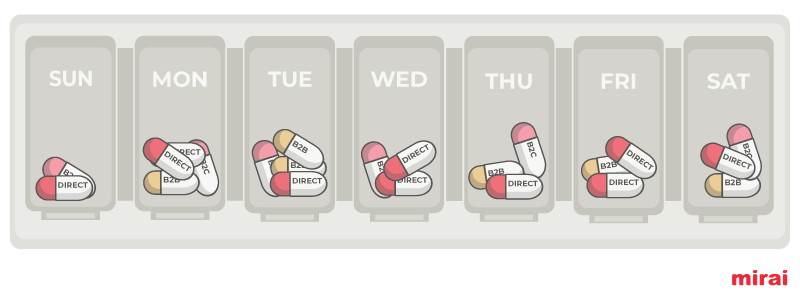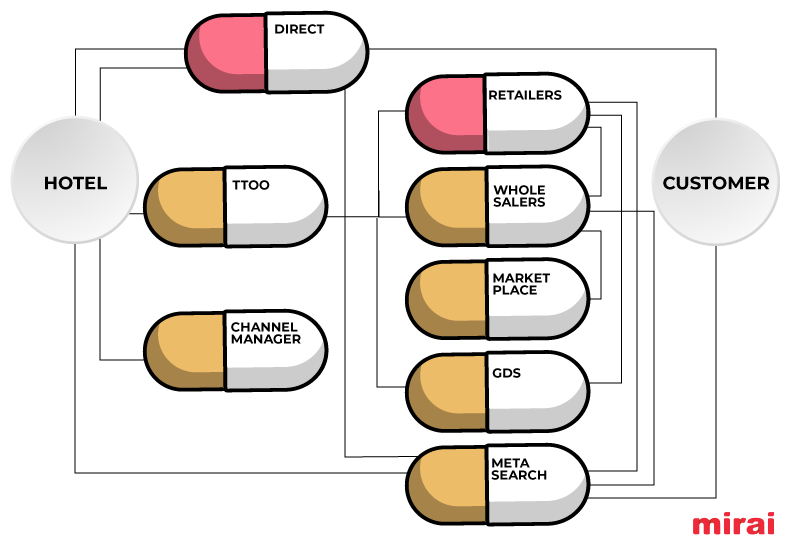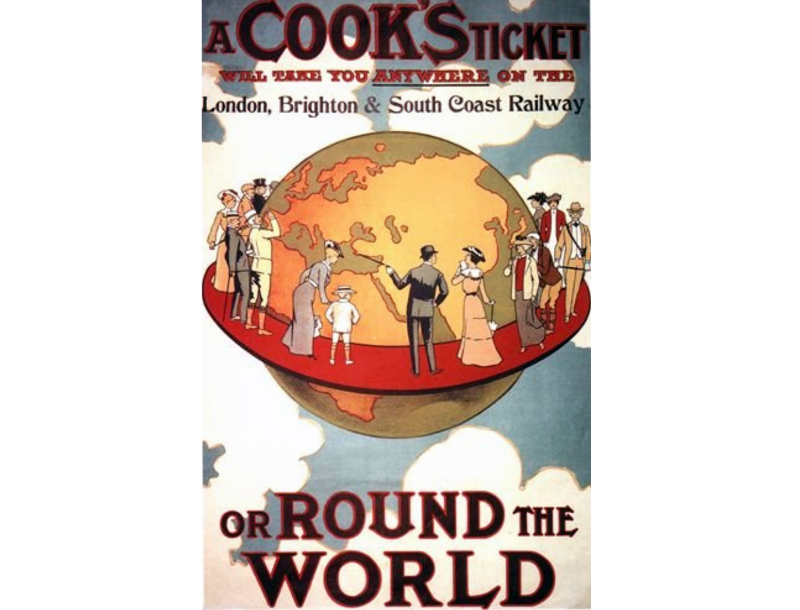In recent years, the social context has favoured the development and positioning of direct sales as a key channel in hotel distribution.
NB: This is an article from mirai, one of our Expert Partners
Despite this, many hoteliers have not yet taken the steps necessary to promote their growth and optimise their channel mix; or worse, after the recovery seen in the sector this season, they have taken a step back in their strategy in favour of other less profitable or strategic channels.
All channels try to adapt to change to increase their presence in the ecosystem, even to survive the circumstances of the time. Many have evolved and mutated over the years in search of the master formula that will put them at the forefront of this race to win over the customer.
During the next few minutes, we will take a look at some of the key terms and ideas in the world of distribution. We will do this by reviewing some of the main channel partners, their role and the extent to which we should use each of them to best implement our distribution strategy.
Let’s start with the basics and a simple definition of the term: Distribution is the process that makes it possible to put our product at the service of the end consumer. The more diversified our product is, or the more rooms we have, the more difficult it becomes to reach that consumer and to stand out from our competitors in the tourism market. In this context, distribution channels come into play, as they help us reach clients that we cannot access independently, or those that would be too expensive for us to access. Profitability (calculated through average net price analysis) and common sense must be the basic components of our strategy and the framework for establishing a healthy and optimised channel mix.
Understanding how the different channels work can be difficult, as they do not come with a detailed prospectus, and the terms we currently use do not properly define the complexity behind each of them: Online Travel Agents (OTAs) that redistribute or pay guarantees to hotels, tour operators that sell to the end client or that connect dynamically with accommodation providers, Business to Business (B2B) intermediaries that demand package rates, etc. The distribution ecosystem becomes even more complex when we talk about channels: we find channel partners that sell, others that distribute, some that are purely showcases, and some that have tools to facilitate the distribution of our prices.
All well-managed channels have the potential to deliver value. The problem arises when we treat all channels equally, do not correctly delimit their scope of action or the commercial conditions that protect our overall strategy (and direct sales in particular), or simply allow one of them to take control of our distribution.
Tour operators
These are, along with travel agencies, the great pioneers of the sector and to this day continue to be the backbone of many hotels.
It is undoubtedly a channel that brings great value, as it complements online sales very well and allows you to reach many clients you won’t be able to access otherwise. They have great potential for generating demand and promoting new destinations, as with their strategic agreements they design tour packages and can consciously direct clients to your accommodation or destination.
Their target client is usually not the final consumer, and they distribute through agency networks (which they may own) and other intermediary companies. Their origins are in the offline world, but some markets (such as the Nordic market) or companies (such as Jet2) have been carving out an important niche for themselves online.
Coming from the offline world translates to working within rigid margins with contract princes and not standing out for their versatility and agility to adapt to changes.
Historically, they are the great allies of holiday hotels. They can handle a high level of commitment (guarantees) and risk (airline seats) and are able to increase occupancy in low seasons. However, they tend to move in the lower net range, and in the event of a crisis they can be the first to disappear, so it is important to find a good balance within the channel mix and not to leave your entire product in their hands.
(Big names include Tui, Apple, Sunwing, Ving, etc.).
Dosage: although it can bring great benefits, we recommend you use this channel in very controlled doses. Complement it with other channels that access different niches, especially your direct channel.
The dosage needed for your channel mix will depend on the online positioning of your product. The smaller it is, the more you will need their support. In this case, we recommend working on a strategy to reduce your dependence on them, as this could lead to addiction.
Locate and work with the most strategic partners by source market and delimit the perimeter in which they can operate, respecting the areas of operation of the other channels (especially direct sales, which you must protect in your agreements).
If it is not financially necessary, do not enter into guarantees or exclusivity agreements and work with free sale quotas (never closed ones). Choose the smallest number of operators that can cover that channel’s largest share of demand. Accept digitalisation as a positive opportunity and work connected and dynamically whenever possible.
Side effects: relying entirely on tour operators simplifies management but leaves your strategy in the hands of third parties, which means you lose control and independence. You will have little room to manoeuvre if you have to react to a crisis.
If you sign Free Independent Travel (FIT) rates, they must be limited to package tours and tour operator distribution, not made available to the online consumer.










